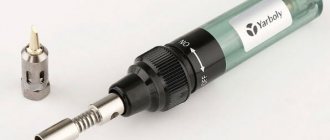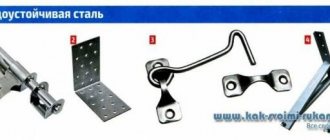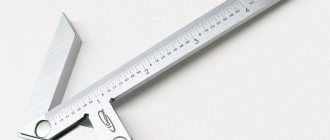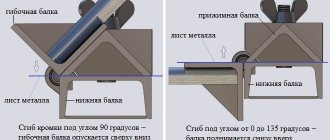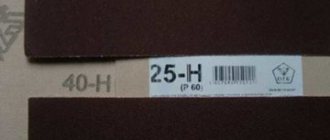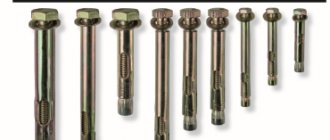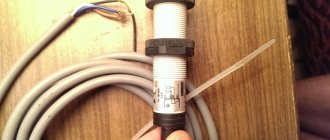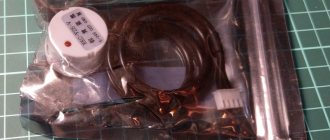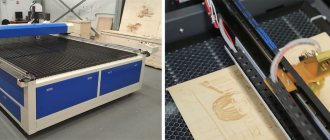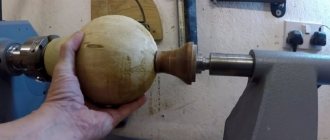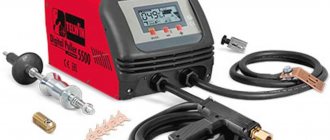Glue is a mixture or substance, various multicomponent solutions, which are made on the basis of organic and inorganic substances. Using glue, different materials are connected: fabrics, wood, glass, metals, paper, leather, ceramics, rubber, plastics. Bonding occurs due to the formation of an adhesive bond between the surfaces being connected and the adhesive layer. The strength of adhesive joints can also be affected by cohesion to the adhesive surface. According to the type of gluing, all existing adhesives are divided into non-drying, drying adhesives and bonds based on polymerizing compositions.
Wood glue is used to firmly fasten parts made of wood and other wood-based materials, such as cardboard, plywood or hardboard.
The main component of this type of glue is a protein substance that ensures strong adhesion. Depending on the raw materials used in the manufacturing process, wood glue can be fish glue, bone glue, hide glue, etc.
Carpenter's glue "Moment"
Moment Joiner adhesive is intended mainly for carpentry work, which primarily includes gluing furniture parts. 20 minutes after its application, the parts are fixed, and after 24 hours the structure gains strength.
Moment Joiner glue has excellent adhesive ability and is chemically neutral. The glued materials do not change their color and shape. The composition does not cause allergies and leaves no odor after complete drying. Apply glue to a cleaned and degreased surface at temperatures above +10°C.
What glue is used where?
Today, a universal glue for wood has not yet been developed - which one is better must be chosen based on the tasks, and the material used, we will consider in more detail using the example of popular brands.
For sexual work
For working with plywood and installing floors, the best adhesives are:
- Chemolan B45 is a universal wood adhesive that is waterproof and therefore indispensable for flooring work, since the resulting joint has increased strength, ductility, and does not deform when heated and hardened.
- Bostik Tarbicol PU 1K is intended for installation of parquet and solid wood boards on various surfaces. Allows you to smooth out small irregularities, a good level of frost resistance and insensitivity to heating. Easy to apply. Instant grip. Releases toxins when working with it. Contact with skin and mucous membranes is not allowed.
Bostik Tarbicol PU 1K - good but caustic glue Source mirom.by
- Ceresit R 710 is a universal adhesive for interior and exterior use. Suitable for all surfaces. Recommended for gluing wooden floor slabs, especially if they are located in production workshops.
- Chimiver Adesiver Elastic is intended for parquet work. In addition to the fact that this wood glue is waterproof, the joints have increased elasticity and strength. Hardening occurs within three days.
- Titebond from Franklin International . It contains no solvents. The basis is synthetic and natural polymers. Suitable for working with any wooden surfaces and other materials.
See also: Catalog of companies that specialize in finishing materials and glass products.
For windows, doors and stairs
The manufacture of stairs, windows and doors requires a particularly strong connection of all components. The seams must be monolithic. The best adhesive compositions for these purposes are:
- Rakoll is a German quality glue. The seams are heat and water resistant. Fast setting. Suitable for cold and hot gluing. Has deep penetration. Upon contact with metal, a blue tint appears.
Reliable glue, but it is better not to use it for metal connections Source im9.cz
- Kiilto to PVA D3 is a PVA glue for wood with increased frost resistance and water-repellent properties.
- Ultima Joiner PVA is universal. Suitable for working with any type of wood. It has high connection strength - 0.9 kgf/cm. Therefore, it is recommended when gluing steps and other parts of stairs. Suitable for street work. The downside is that it takes a long time to dry.
- Titebond original wood glue is one of the best professional glues. Well connects surfaces with a large area. Particularly strong groove and tenon joints are obtained. Has high consumption.
- Titebond III Ulimate 1416 is a professional composition. Meets all ANSI/HPVA Type I standards. This indicates that the resulting connection has an increased level of water resistance. The first and only adhesive that can be cleaned with water. Characterized by strong initial adhesion of the joint. Can be used for outdoor work. Non-toxic. The seam can be sanded.
Preparing glue before work
Before starting work, dry wood glue needs to be prepared. To do this, the granules (when using a glue tile, you need to wrap it in a cloth and break it into small pieces with a hammer) are filled with cold water in advance so that the water covers the dry glue. The mixture is kept until it becomes a soft gelatinous mass. Basically, depending on the amount of glue, the procedure takes 4-12 hours.
It is recommended to fill only with boiled water, because the salts contained in raw water, even in small quantities, can subsequently adversely affect the strength of the bond.
After swelling, the glue is cooked for 15 minutes with constant stirring in a water bath at 60-80 degrees, until a uniform liquid mass without lumps is formed. You cannot heat the glue over normal heat - if the solution burns or boils, its adhesive ability is significantly reduced.
For cooking, you should use special devices called “Kleyanka”, which have two metal vessels. Hot water is poured into a large vessel, after which a smaller vessel with glue is inserted, and the glue is placed on low heat. Water is poured into the outer vessel so that when boiling it does not leak into the inner vessel with wood glue. It is better to choose glue boxes made of copper.
If necessary, it is easy to make such a device yourself from scrap materials. For example, you can take a large tin can as a vessel, and place a small glass jar inside, which should be placed on a stand or hung on a wire.
To obtain the required consistency of the glue solution, hot boiled water is either added during cooking or the cooking time is increased to evaporate excess moisture. For gluing tenon and end joints, it is better to make the glue a little thicker than for planar joints of sheet materials (hardboard, plywood, etc.).
Wood glue can be considered ready after a small light film appears on its surface and after it begins to flow in a continuous stream from the stirring stick.
You should cook the amount of wood glue that is required to complete the current job, because, despite the available additives, over time the solution begins to lose its properties, and after three days it can rot and become moldy.
Cooking method
To work with wood, it is recommended to preheat the adhesive composition (up to 60-70 degrees). Add water to the glue and heat it in a water bath. The mixture is brought to a homogeneous mass similar in consistency to cream. During the cooking process, the composition must be constantly stirred so that the mixture does not have time to burn.
There should be no lumps or other defects, the glue should be uniform in thickness. After cooking, the mass is poured into a plate placed in a water bath. Gradually the composition cools, forming the correct consistency. On a plate, the adhesive mass is cut into separate strips using a knife, which are later used in carpentry (preheated).
Application
Wood glue is used hot at temperatures up to 70 degrees until it thickens. As a rule, the glue is able to maintain the desired temperature of the composition in room conditions without the need to additionally heat it for 2 hours.
Carpenter's glue is evenly applied to the gluing areas using a small brush.
To prevent the hot solution from being squeezed out too much, it is necessary to give the applied layer time to dry - approximately 2-5 minutes. After this, the surfaces are connected, the parts are slightly rubbed against each other, compressed with a clamp (or tightly tied with twine) and left for 4-6 hours until they are glued.
It is recommended to make the thickness of the adhesive seam no more than 0.1-0.2 millimeters.
For strong and high-quality gluing with wood glue, the parts to be glued must be dry. Wood should not have a moisture content of more than 10 percent, veneer - no more than 5 percent.
Useful tips
Protein-based glue has its own characteristics. Those who use it for the first time do not always know them. Below are some tips to make using this material easier.
- To maintain the desired consistency, you need to add hot boiled water (if you want to make the mass more liquid) or increase the cooking time (if you want a thicker mass).
- The ideal operating temperature is from 30 to 70 degrees. In an oilcloth at an ambient temperature of about 25 C, the glue remains suitable for two hours. When the adhesive becomes too cold, it thickens and the adhesive properties are reduced.
- Ready-made wood glue cannot be stored. Therefore, you will have to soak and cook exactly as many granules as necessary for the current work. Already on the second day, the ability to bond becomes significantly lower. And after three days, mold is likely to appear. Since the basis is protein raw materials, rotting and decomposition, accompanied by a characteristic odor, is possible.
- The thickness of the adhesive layer should not exceed 0.2 mm.
We recommend: How to use rubber glue and what are its features?
There is also casein glue. It consists of kerosene, sodium fluoride, casein, copper sulfate and slaked lime. This type is rarely used because it is poorly stored and, when dried, significantly decreases in volume and changes color.
Improving the quality of glue
By adding various additives to finished wood glue, you can make it more universal, suitable for joining materials other than wood.
Eg:
- The moisture resistance of the adhesive joint increases significantly if you add 10 g of linseed oil or natural drying oil to 40 g of dry wood glue.
- To glue the skin, you need to add glycerin to the wood glue in a ratio of 1 tsp. half a liter of glue.
- If you add sifted wood ash or dry chalk powder to hot wood glue, you can get an excellent putty paste.
PVA
PVA glue stands apart. It is completely synthetic. It is based on a substance called polyvinyl acetate. But PVA is safe, like its protein counterparts. It is even approved for use in educational institutions for children's creativity. PVA is also actively used for carpentry and construction work. It does an excellent job of joining wood products, cardboard, and wood boards.
Advantages of PVA glue:
- elasticity;
- moisture resistance;
- reliability of surface adhesion;
- transparency when drying;
- affordable price;
- Sold as a ready-to-use mass.
Video description
What EDP epoxy glue is is described in more detail in the video:
- SOUDAL 66A products deserve special attention . It is universal and suitable for absolutely any surface. Indispensable in the manufacture of garden furniture and facade work. But you need to know how to work with it, as it expands when it dries.
- Kleiberit 303 .0 is suitable for working with any wood (even the densest) and with all types of wood-containing materials. Characterized by quick setting and reliable seam.
- Glue such as Moment Joiner has an expanded scope of application. Characterized by a particularly strong connection of surfaces. It takes on the color of wood, so we recommend it for working with light varieties. The glue does not contain toxic substances and is environmentally friendly. Characterized by fast setting, resistance to moisture and critical temperatures. With all this, it has a relatively low cost.
Moment Joiner is available in different packaging Source www.bel-plast.com
Artelit WB-330 glue has similar characteristics . But, it has an assigned water resistance class - D300. Not flammable. Upon contact with open fire and under the influence of critical temperatures, they will not release toxic substances.
Bone glue: properties and applications. Natural adhesives
Bone glue in most variations is an appropriate base based on organic components. They allow you to effectively connect elements made of wood, cardboard, hardboard and other similar materials.
The connection itself is characterized by maximum strength; even if the structure is destroyed, you can notice that it is not the adhesive layer that is deformed, but the adjacent layers of wood or analogues.
The mixture in question includes safe organic components that are approved for use in educational institutions and children's rooms.
Types of bone glue
To prepare the base composition, several main types are used, differing in the main components:
- Flesh option.
- Fish composition.
- Pure bone glue.
The latest version is the most common, the composition is obtained from animal bone waste. The most valuable specimens are considered to be pellets obtained from horns. The set includes collagen, gelatin and cysteine, which have excellent viscosity and are capable of firmly gluing products made of wood and similar materials.
The leather analogue is made from waste from the leather industry. In fact, the main part of the material consists of subcutaneous tissue, cut off during the tanning of hides. Oligopeptides and natural leather trimmings are often added to the composition of this glue. Output – scales, tiles, powder.
Fish bone glue is prepared from bones, heads, scales, entrails, and fins.
This substance is the most expensive, but it was often used for icon painting and other works that required maximum care and accuracy.
A composition is produced for fastening dissimilar parts, produced in the form of granules or flakes. Let's consider the features of all variations, as well as the features of their operation.
- 1 Production
- 2 Hide glue 2.1 Production
- 3 Preparation
- 4 Application
- 5 Notes
- Soak. Powder or granules are poured with cold, pre-boiled water. Tap liquid can negatively affect the quality of the finished mass. Fill the container so that all elements of the adhesive composition are covered. Soaking is considered correct if the substance becomes soft and gelatinous. The soaking process takes from 4 to 12 hours, depending on the amount of product being processed.
- Cooking. The swollen glue should be boiled for about 15 minutes in a steam bath. Maintain the temperature at about 60-80 degrees. The result should be a homogeneous liquid mixture without lumps. It is important not to heat the mass over an open fire and not to bring it to a boil. Otherwise, the protein from which the granules are made will begin to deform, and the adhesive ability will decrease. After a thin film has formed on the surface, the adhesive mixture is ready.
Production[ | ]
To obtain glue, animal bones are cleaned, crushed, degreased, treated with a weak solution of sulfurous acid to remove mineral salts and then boiled in special apparatus in which the bones are repeatedly exposed to steam and water. As a result of this treatment, the collagen present in the bones turns into glutin, which is an adhesive substance.
Bone glue is produced in the form of dry tiles from dark yellow to dark brown, with a moisture content of 17% [ source not specified 2834 days
]. Hard crushed glue is also available.
Preparation
Carpenter's bone glue is mainly sold in dry form. The mass is small brown or yellow granules, sometimes this material is presented in the form of small slabs.
Can the quality of the composition be determined visually? The purer and lighter the material, the better the product. The cooking process is also extremely important. For example, a tile needs to be crushed into crumbs, and then used for its intended purpose.
The preparation of bone glue is divided into the following stages:
Scope of application of hide glue
There are a huge number of areas of life where this type of glue is used. For example, hide glue is very actively used in the woodworking industry. There they glue chipboard and fiberboard together. This glue is no less necessary in the paper industry. It is used to glue cardboard boxes and packaging for equipment such as televisions or computers.
Furniture factories also use glue made from flesh to glue some furniture elements together. And many other areas where you cannot do without this glue: metallurgical, printing, typographic areas.
All this is explained by the fact that the quality of gluing with hide glue is incomparable with all other glues, for example, the usual PVA glue or any other adhesive compositions.
Before use
In the store, hide glue is sold in ready-made or dry form. If the glue is dry, you must first prepare it before you start gluing the surfaces you need.
To do this, dry glue is filled with a certain amount of water and stirred until it reaches the consistency of liquid sour cream. After this, you need to leave the glue for a while so that it settles.
After about an hour or two, the glue can be considered ready for use.
Peculiarities
The readiness of bone glue for wood can be checked in another way. The stick used to stir the substance is raised above the composition. If the product drips down in drops, the process is not completed; complete readiness is indicated by the flow of the mass in a monotonous stream.
To cook natural glue, a special device is used - a glue gun. It consists of two vessels of different sizes, one of which is inserted into the other.
A large container is filled with water, and the second reservoir contains the resulting glue. At the next stage, a small vessel is placed in a large tank and placed on fire.
The optimal manufacturing material for the glue is copper.
Cooking[ | ]
To prepare liquid glue from dry bone or flesh glue, the tiles are broken into pieces, crushed and soaked for 12-24 hours in cold water, then boiled in a water bath at a temperature of no more than 70° and without overheating for a long time.
An external sign of the readiness of the glue is complete dissolution in water (meshwood may have a certain number of insoluble scales remaining). Increased temperature and prolonged boiling deteriorate the quality of the glue. During the cooking process, the glue is continuously stirred.
A warm glue solution is used, not lower than 30 C. If necessary, an antiseptic is introduced into the welded glue, previously dissolved in hot water, for example, sodium pentachlorophenolate or others, in an amount of 0.5 to 1% by weight of the dry glue.
It is advisable to use the finished glue immediately; if necessary, store it for no more than 5 days.
Recommendations
You can prepare glutinous glue yourself. To do this, you will need to take two containers of different sizes. The outer shell could well be a tin can. Insert a tin can attached to a wire inside it.
The quality of the adhesive composition can be improved by adding various fixing substances. This will allow you to use glue for fastening not only wooden surfaces, but also other analogues.
Among the components used, the most popular, along with efficiency, are the following materials:
- Drying oil. About 10 grams of linseed oil or 40 granules of natural drying oil are added to the composition. This component allows you to increase the resistance of the working seam to moisture.
- Glycerol. An equally effective component makes it possible to use glue when processing leather surfaces. Added at the rate of two teaspoons per liter of finished substance.
- Chalk powder combined with wood ash. After sifting this mixture, add it in small quantities. The paste improves putty properties,
- Phenol, ammonia, borax. These components are an excellent antiseptic that prevents the formation of fungus and mold.
Storage
Natural protein-based adhesives have their own characteristics. Users who use such formulations for the first time should take into account some features.
Among them:
- Adding boiled water. This is necessary if you want to make the mass thinner or extend the cooking time of the composition.
- The optimal operating temperature varies from 30 to 70 degrees Celsius. After this, the finished adhesive mass retains its properties for two hours (provided the ambient temperature is 20-25 degrees). Then the composition begins to cool, and its properties are lost.
- Ready-made wood glue cannot be stored for long periods of time. Within a day it loses its properties. In this regard, to use it, it is necessary to use as many granules as required for a specific operation. On the third day, the composition begins to decompose and smell unpleasant, which is due to its protein base. The glue is applied in layers no thicker than 0.2 millimeters. A thicker layer simply will not set properly.
Exploitation
Casein glue can serve as an analogue for gluing wooden furniture. It consists of sodium fluoride, kerosene, copper sulfate and slaked lime. This composition is not used very often because it has a short shelf life and is prone to drying out, changing color and decreasing in volume.
Working with wood glue is somewhat different from using synthetic analogues (for example, PVA (polyvinyl chloride analogue), which is also used for gluing cardboard and wood).
What can be glued with wood glue
Wood glue (hide and bone) is universal and is suitable not only for gluing wood.
- If you add 1/50 of glycerin to the volume of glue, then you can glue the skin with this composition.
- By adding glycerin 1:20, the heat-resistant properties of the glue are enhanced.
- The water resistance of wood glue increases by adding 10% by weight of potassium dichromate or 15% turpentine.
Subscribe to our Yandex.Zen channel
Animal adhesives
In oil painting, glue is used mainly for gluing the canvas. The purpose of sizing is to close the pores between the threads and create a transition layer between the fabric and the ground, some types of which contain oil. For this purpose, glues of animal origin are used.
Synthetic adhesives are also used, but they are used for gluing frames, preparing a pattern on a baguette, and for much more.
Furniture made of wood with PVA
Separately, PVA glue can be noted. It is completely synthetic, but safe, like its protein variations. Its use is legally permitted in preschool institutions.
Advantages:
- Excellent parameters for joining wood, cardboard, paper.
- High elasticity.
- Resistant to moisture.
- Excellent adhesion of treated surfaces.
- Transparent after drying.
conclusions
All of these types of wood glue are environmentally safe. It is better to carry out construction operations with the hide version or PVA. These substances have excellent setting parameters and are affordable. For restoration and gluing of delicate and thin surfaces, glue made from fish raw materials is suitable.
Basic criteria for choosing wood glue:
- The lighter and more transparent the granules or tiles, the better the quality of the raw materials used.
- The most expensive and best glue is made from fish waste. It meets the highest standards. Used for restoration work and joining delicate surfaces.
- Bone and flesh composition is used for routine repair work.
Nuances of choosing glue
When buying wood glue, in addition to basic information about the composition and manufacturer, you need to take into account important nuances:
- For light wood species, the choice of casein glue is extremely unfortunate, since it darkens over time. It is better to opt for Joiner, which takes on the shade of the wood being glued together.
- If you plan to disassemble glued parts in the future, it is better to give preference to casein or bone glue. For long-lasting connections, synthetic compounds are more suitable.
- The quality of PVA glue can be determined by eye. If its consistency is too thick (the composition is very viscous) or liquid (increased fluidity), then the quality leaves much to be desired. Most likely, the rules for transporting and storing the product were violated.
- Features of wood. Not all compounds are suitable for working with resinous and wet surfaces.
When sizing a large volume of wood, in order to save money, it is best to give preference to powder formulations. Unless the quality of the connection suffers from this choice.
The best manufacturers
An important selection criterion is the manufacturer. To understand which glue to use, you need to know the rating of the best today. These include:
- "Lakra" (Russia). It occupies a leading position in the field of paint and varnish production in our country.
- "Tex" (Russia). It produces adhesive mixtures for cardboard, plywood, and paper for both domestic and industrial needs.
- "Akfix" (Türkiye). Produces environmentally friendly paint and varnish products of high quality.
- "UHU" (Germany). Produces environmentally friendly compounds with high technical characteristics.
- "Kleiberit" (Germany). It produces adhesive compositions, which are mainly used in the production and repair of furniture.
- "Titebond" (USA). Offers consumers a wide range of excellent quality products.
- "Kiilto" (Finland). It produces only environmentally friendly wood glues that do not contain toxic substances.
- "Moment" (Russia). Engaged in the production of water-dispersion adhesives. The product has an affordable price and high technical characteristics.
The quality of products offered by these manufacturers meets world-class standards.
| Purpose | Names | Price |
| PVA BASED WOOD GLUE | KLEIBERIT 303.0 | 291 ₽ |
| ULTIMA JOINER PVA | 129 ₽ | |
| MOMENT SUPER PVA D3 MOISTURE RESISTANT | 490 ₽ | |
| TEX PVA JOINERY PROFESSIONAL | 149 ₽ | |
| KRASS PVA PVA D3 | 205 ₽ | |
| POLYURETHANE ADHESIVES FOR WOOD | TITEBOND POLYURETHANE WOOD GLUE 2300 | 385 ₽ |
| KLEIBERIT 501.0 | 477 ₽ | |
| SOUDAL 66A | 450 ₽ | |
| RESIN BASED JOINERY ADHESIVES | UHU PLUS ENDFEST 300 | 503 ₽ |
| TITEBOND ORIGINAL WOOD GLUE | 480 ₽ | |
| EDP EPOXY GLUE | 250 ₽ | |
| TITEBOND III ULIMATE 1416 | 590 ₽ |
